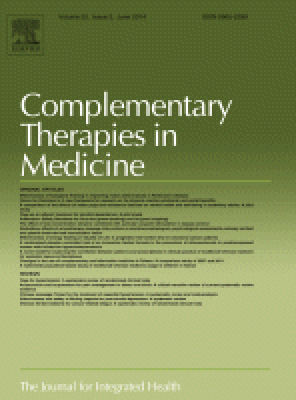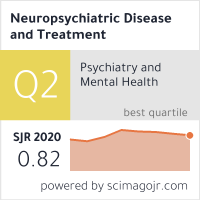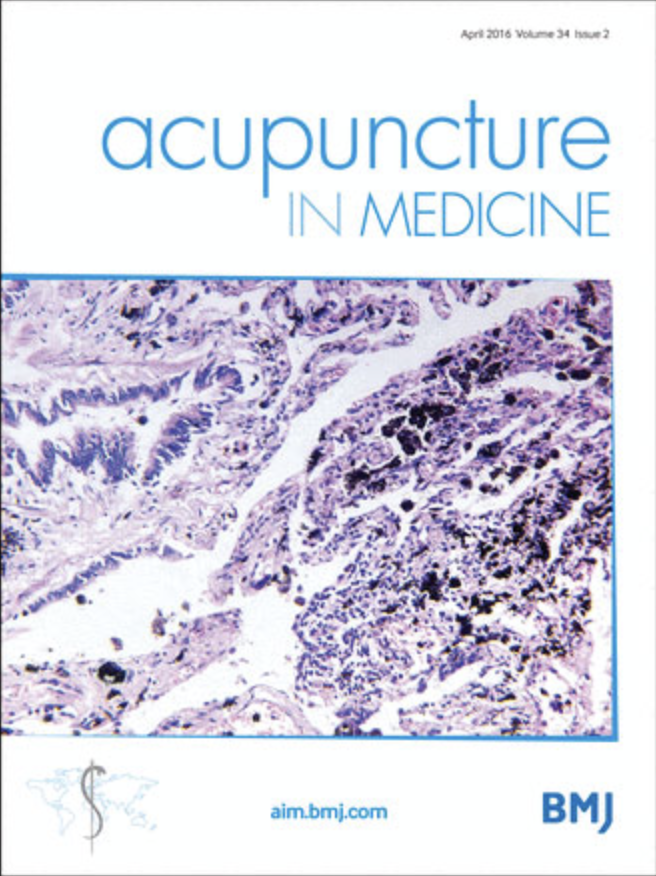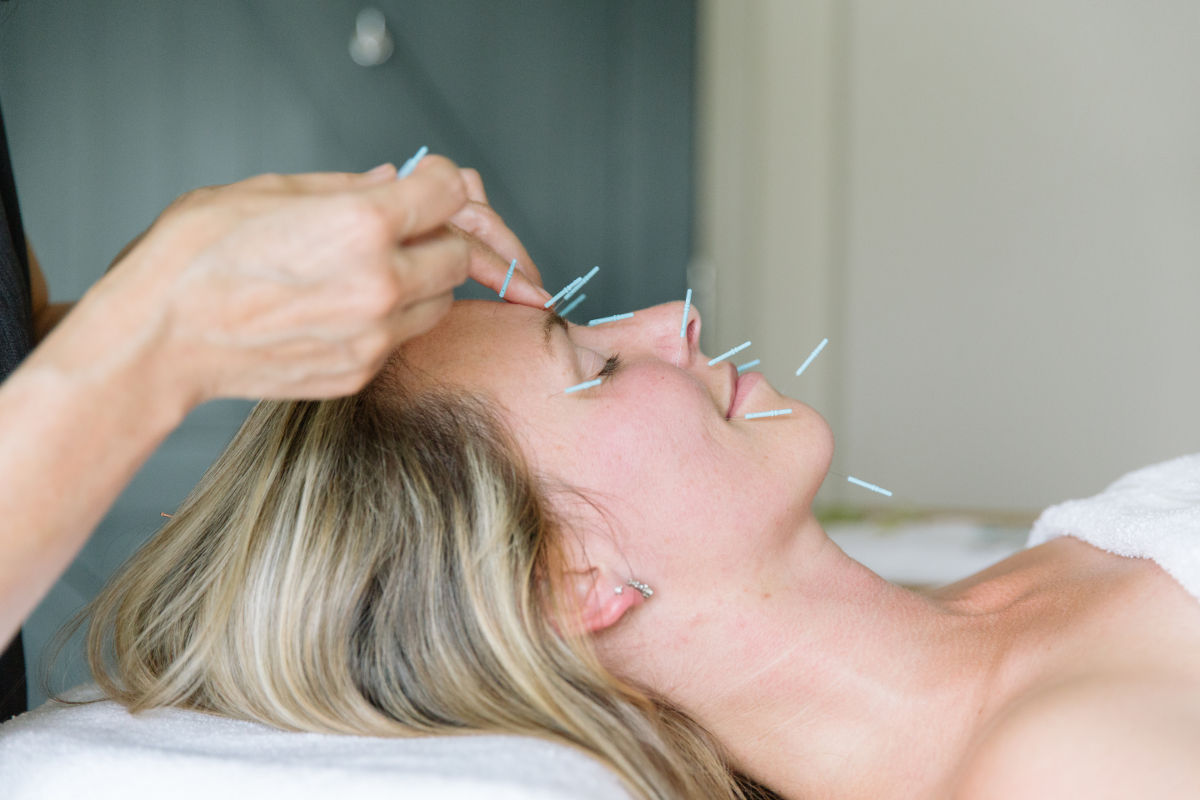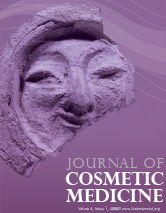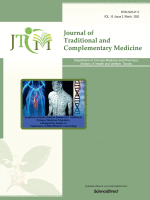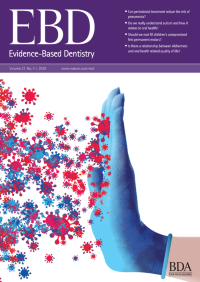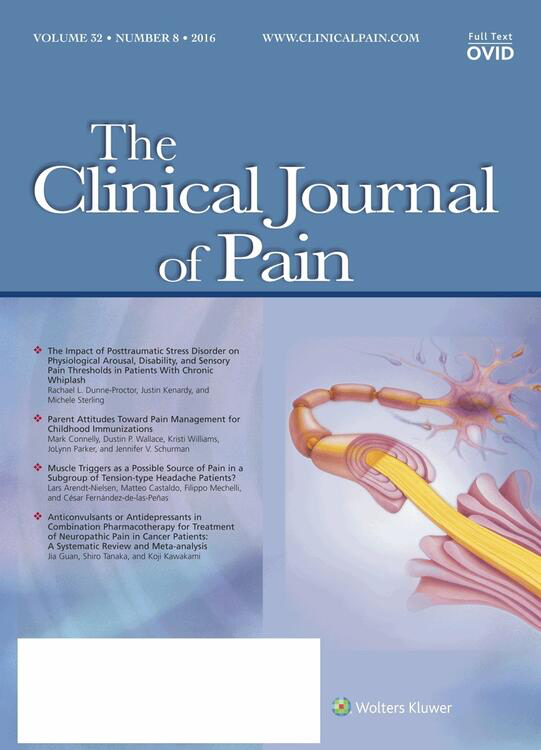Presentation Slides
Chinese Medicine Research Hub
Randomised Controlled Trial
Auricular acupuncture was found to improve physical and emotional aspects in patients with temporomandibular disorders, with similar results to occlusal splint treatment.
2022 Complementary Therapies in Medicine Auricular acupuncture in TMD — A sham-controlled, randomized, clinical trial
Aroca JP, Cardoso PMF, Favarão J, Zanini MM, Camilotti V, Busato MCA, Mendonça MJ, Alanis LRA
Chinese Medicine Research Hub
Systematic Review
Acupuncture is associated with a reduction in the risk of depression during long-term follow-up in patients with trigeminal neuralgia.
2020 Neuropsychiatric Disease and Treatment Long-Term Beneficial Effects of Acupuncture with Reduced Risk of Depression Development Following Trigeminal Neuralgia: A Nationwide Population-Based Cohort Study
Liao CC, Lin CL, Liao KR, Li JM
Chinese Medicine Research Hub
Review Article
Acupuncture therapy seems to decrease frequency and intensity of trigeminal neuralgia pain episodes, alone or in combination with gold standard medications.
2020 Revista Internacional de Acupuntura Acupuncture therapy in trigeminal neuralgia: An integrative literature review
Aquino I, Nascimento M, Aquino T, Kosminsky M
Chinese Medicine Research Hub
Review Article
Both facial acupuncture and facial exercises have the potential to improve the skin laxity, wrinkle length, muscle thickness, and pigmentary changes associated with aging.
2020 Cosmetics Non-Traditional and Non-Invasive Approaches in Facial Rejuvenation: A Brief Review
M. Smith, A. Ferris, T. K. Nahar, V. Sharma, M.
Chinese Medicine Research Hub
Systematic Review
Acupuncture might be effective at reducing itch intensity and may be more effective than conventional medicine at reducing eczema area and severity index (EASI) and improving the global symptoms of atopic eczema.
2019 Acupuncture in Medicine The effectiveness and safety of acupuncture for patients with atopic eczema: a systematic review and meta-analysis
Jiao R, Yang Z, Wang Y, Zhou J, Zeng Y, Liu Z
Chinese Medicine Research Hub
Systematic Review
The safety of cosmetic acupuncture appears tolerable, however, well-designed high-quality studies, are needed to determine its effects on facial cosmetic conditions.
2018 Journal of Cosmetic Medicine Acupuncture for cosmetic use: a systematic review of prospective studies
Byung-Cheul Shin & Kyeong-Tae Lim
Chinese Medicine Research Hub
Systematic Review
In oral care, acupuncture can be a supplement to conventional treatments in temporomandibular disorders, facial pain, pain management, Sjoegrens syndrome, and in phobias and anxiety.
2017 Journal of Traditional and Complementary Medicine Acupuncture (針灸 Zhēn Jiǔ) – An Emerging Adjunct in Routine Oral Care
Gupta, D., Dalai, D., Swapnadeep, Mehta, P.D., Indra, B., Rastogi, S., Jain, A., Chaturvedi, M., Sharma, S., Singh, S., Gill, S., Singh, N., & Gupta, R. (2014). Acupuncture (針灸 Zhēn Jiǔ) – An Emerging Adjunct in Routine Oral Care. Journal of Tradi
Chinese Medicine Research Hub
Systematic Review
Acupuncture therapy is effective in reducing the degree of pain in patients with temporomandibular disorders, especially those with myofascial pain symptoms.
2017 Medicine Acupuncture therapy in the management of the clinical outcomes for temporomandibular disorders
Wu, Jun-Yi MD; Zhang, Chao MD; Xu, Yang-Peng MM; Yu, Ya-Yu MD; Peng, Le PhD; Leng, Wei-Dong PhD; Niu, Yu-Ming PhD; Deng, Mo-Hong PhD
Chinese Medicine Research Hub
Systematic Review
The majority of trials demonstrate a positive effect of acupuncture over control condition in the treatment of neuropathy.
2015 Neurology Effects of Acupuncture on Neuropathic Pain: A Systematic Review and Meta-analysis
Alexandra Dimitrova, Charles Murchison, Barry Oken
Chinese Medicine Research Hub
Clinical Study
Chinese acupuncture is safe and can be efficient in alleviating pain in patients suffering from temporomandibular disorder without clear joint pathology.
2010 Journal of Acupuncture and Meridian Studies Acupuncture for treating temporomandibular disorder: retrospective study on safety and efficacy
Noiman M, Garty A, Maimon Y, Miller U, Lev-Ari S.
Chinese Medicine Research Hub
Review Article
There is limited evidence that acupuncture is more effective than sham acupuncture in alleviating pain and masseter muscle tenderness in temporomandibular disorders.
2010 Evidence-Based Dentistry Limited evidence that acupuncture is effective for treating temporomandibular disorders
Jens C Türp
Chinese Medicine Research Hub
Systematic Review
Acupuncture is a reasonable adjunctive treatment for producing a short-term analgesic effect in patients with painful temporomandibular disorder symptoms.
2010 The Clinical Journal of Pain Acupuncture in the treatment of pain in temporomandibular disorders: a systematic review and meta-analysis of randomized controlled trials
La Touche R, Goddard G, De-la-Hoz JL, Wang K, Paris-Alemany A, Angulo-Díaz-Parreño S, Mesa J, Hernández M
Executive Summary
Write an executive summary in the form of a blog article on the topic of "Research into Chinese medicine treatment for Facial Conditions" summarising the research below and using language that can be easily understood by patients and avoiding medical jargon using a professional and caring tone of voice.
Write an executive summary in the form of a blog article on the topic of "Researched Chinese medicine treatments for Facial Conditions" summarising the research below in an objective and easy to understand way, and using language that can be easily understood by patients. Group the article into Chinese medicine treatments first, followed by nutrition and other treatments. Avoid using medical jargon and use a professional and caring tone of voice.
Write me a concise but easy to understand executive summary on the topic of "Chinese medicine treatments for Facial Conditions" based on the following research that I will give you. Your summary should be 2 paragraphs long in Australian English spelling and include references to the studies.
A Randomised Controlled Trial published in 2022 in the journal Complementary Therapies in Medicine found that Auricular acupuncture was found to improve physical and emotional aspects in patients with temporomandibular disorders, with similar results to occlusal splint treatment. In the study, patients suffering from temporomandibular disorders were allocated into three groups - those who received auricular acupuncture (AA), those treated with occlusal splints (OS), and a sham group. The patients were evaluated and monitored over an eight-week period using axes I and II of the RDC-TMD according to CONSORT guidelines.
The findings revealed significant improvements in both the emotional aspects and physical aspects amidst the auricular acupuncture group and occlusal splint group. The sham group showed no improvements in the emotional aspect and only a few in the physical aspect. The comparison between the auricular acupuncture group and the occlusal splint group revealed similar number of variables with improved outcomes, indicating that the auricular acupuncture treatment was as effective as the occlusal splint treatment. On the other hand, the sham group presented a significant difference when compared to the other groups. These results strongly suggest the potential of auricular acupuncture as a treatment option for temporomandibular disorders.
A Systematic Review published in 2020 in the journal Neuropsychiatric Disease and Treatment found that Acupuncture is associated with a reduction in the risk of depression during long-term follow-up in patients with trigeminal neuralgia. In total, 776 patients with newly diagnosed trigeminal neuralgia in each cohort with similar baseline characteristics were enrolled in the study. The acupuncture cohort had a reduced risk of depression compared to the non-acupuncture cohort. Kaplan–Meier analysis also revealed that the cumulative incidence of depression was significantly lower in the acupuncture cohort during the 13-year follow-up period. In particular, the beneficial effect of acupuncture was a decrease in the risk of depression among TN patients aged 50– 69 years who had also used carbamazepine.
A Review Article published in 2020 in the journal Revista Internacional de Acupuntura found that Acupuncture therapy seems to decrease frequency and intensity of trigeminal neuralgia pain episodes, alone or in combination with gold standard medications. Among the six studies selected, most were randomized controlled clinical trials, developed in China. Only one study performed a retrospective cross-sectional. To assess pain, most used the VAS scale. There were very similar methods concerning points selection and treatment protocols. All studies found a significant decrease in pain frequency or intensity, disregarding the type of acupuncture applied.
A Review Article published in 2020 in the journal Cosmetics found that Both facial acupuncture and facial exercises have the potential to improve the skin laxity, wrinkle length, muscle thickness, and pigmentary changes associated with aging. While injectables, lasers, and surgical interventions have traditionally been used to reverse the changes associated with facial aging, other alternative therapies such as facial acupuncture and facial exercises are now being studied for facial rejuvenation. In this paper, we both summarize the concepts of facial acupuncture and facial exercises, and review seven studies that evaluate the efficacy of these modalities. Data from these studies suggest that both facial acupuncture and facial exercises have the potential to improve the skin laxity, wrinkle length, muscle thickness, and pigmentary changes associated with aging. Patients frequently reported improvement and experienced very few side effects. However, further research is necessary before these modalities are widely accepted as effective by the medical community, though the results of these studies may ultimately make providers less hesitant when patients seek out these services.
A Systematic Review published in 2019 in the journal Acupuncture in Medicine found that Acupuncture might be effective at reducing itch intensity and may be more effective than conventional medicine at reducing eczema area and severity index (EASI) and improving the global symptoms of atopic eczema. Acupuncture might be an effective treatment capable of reducing itch intensity, and may be more effective than conventional medicine at reducing EASI and improving global symptoms for patients with AE. Acupuncture is a safe treatment for patients with AE, but the available data are too few to suggest that acupuncture alone is effective at improving quality of life and recurrence rate. More high-quality trials with larger sample sizes are needed to confirm the effects of acupuncture on AE.
A Systematic Review published in 2018 in the journal Journal of Cosmetic Medicine found that The safety of cosmetic acupuncture appears tolerable, however, well-designed high-quality studies, are needed to determine its effects on facial cosmetic conditions. Our systematic review of 2 RCTs and 5 prospective, single- armed studies demonstrated that there are a few trials with high-quality evidence regarding cosmetic acupuncture for facial cosmetic conditions. The safety of cosmetic acupuncture appears tolerable; however, well-designed high-quality studies, such as sham-controlled studies with standardized cosmetic acupuncture interventions, are needed to determine its effects on facial cosmetic conditions.
A Systematic Review published in 2017 in the journal Journal of Traditional and Complementary Medicine found that In oral care, acupuncture can be a supplement to conventional treatments in temporomandibular disorders, facial pain, pain management, Sjoegrens syndrome, and in phobias and anxiety. Acupuncture aims to treat a range of medical and dental ailments, though is most commonly used for pain relief. This article reviews about the various possible roles of acupuncture in clinical dental practice. Acupuncture has potential in supplementing conventional treatment procedures by its diverse applicability outreach. Role of acupuncture in dental practice has been well supported by clinical trials. Its role in alleviating facial pain, pre-operative and post-operative dental pain has led to its widespread application.
A Systematic Review published in 2017 in the journal Medicine found that Acupuncture therapy is effective in reducing the degree of pain in patients with temporomandibular disorders, especially those with myofascial pain symptoms. This study compared the clinical effectiveness of acupuncture therapy in TMD patients through the meta-analysis of published results. Our results indicate that acupuncture therapy penetrating the skin has greater effectiveness and reduces the pain degree to a greater extent, especially myofascial pain symptoms, compared with both sham nonpenetrating acupuncture and sham laser therapy.
A Systematic Review published in 2015 in the journal Neurology found that The majority of trials demonstrate a positive effect of acupuncture over control condition in the treatment of neuropathy. The majority of RCTs reviewed showed clear benefit for acupuncture over control in the treatment of diabetic neuropathy, Bell’s palsy and carpal tunnel syndrome. Acupuncture is probably effective in the treatment of HIV-related neuropathy and there is insufficient evidence for its benefits in idiopathic neuropathy. Meta-analyses of all diabetic neuropathy and bell’s palsy data using a summary estimate random effects model showed combined Odds Ratio (OR) of 4.23, p<0.001 favoring acupuncture over control for pain outcomes. The majority of trials demonstrate a positive effect of acupuncture over control condition in the treatment of neuropathy. Further more rigorously designed studies are needed to better characterize this effect.
A Clinical Study published in 2010 in the journal Journal of Acupuncture and Meridian Studies found that Chinese acupuncture is safe and can be efficient in alleviating pain in patients suffering from temporomandibular disorder without clear joint pathology. The results of this study showed that Chinese acupuncture was safe as administered here and was efficient in alleviating pain in patients suffering from temporomandibular disorder not caused by an osseous source. In approximately 90% of these patients, a statistically significant pain alleviation was observed, with the pain completely gone in most patients.
A Review Article published in 2010 in the journal Evidence-Based Dentistry found that There is limited evidence that acupuncture is more effective than sham acupuncture in alleviating pain and masseter muscle tenderness in temporomandibular disorders. Seven RCTs (including 141 patients) met our inclusion criteria. Six studies comparatively tested needle acupuncture against penetrating sham acupuncture, non-penetrating sham acupuncture or sham laser acupuncture, whilst the remaining study tested laser acupuncture against sham laser acupuncture. Five studies were considered to be at low risk of bias. Outcomes were reported for pain intensity, facial pain, muscle tenderness and mouth opening.
A Systematic Review published in 2010 in the journal The Clinical Journal of Pain found that Acupuncture is a reasonable adjunctive treatment for producing a short-term analgesic effect in patients with painful temporomandibular disorder symptoms. The results of this meta-analysis suggest that acupuncture is a reasonable adjunctive treatment for producing a short-term analgesic effect in patients with painful TMD symptoms. Although the results described are positive, the relevance of these results was limited by the fact that substantial bias was present. These findings must be confirmed by future RCTs that improve the methodologic deficiencies of the studies evaluated in this meta-analysis.
